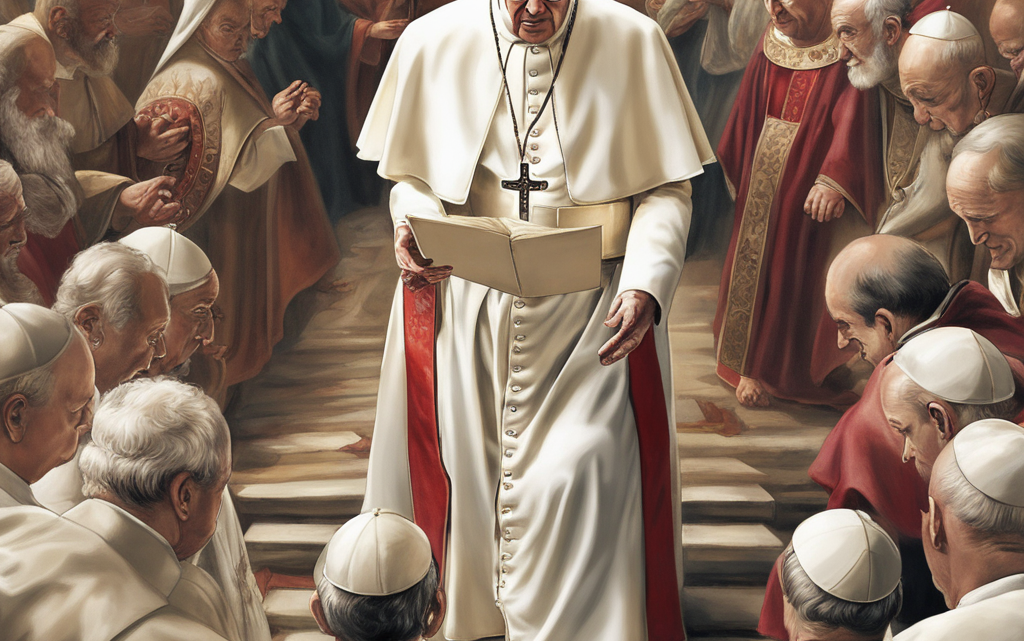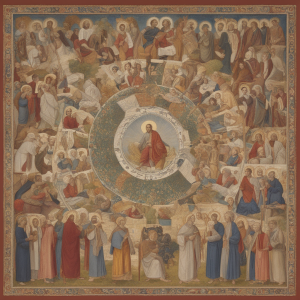“The Evolution of Faith: Leaders, Movements, Distortions, and the Shifting Focus of Sacred Days”


Introduction
The history of faith is a tapestry woven with threads of devotion and divergence. From ancient times to the present, leaders and movements have shaped and, at times, distorted religious teachings. In this journey through time, we’ll explore key figures and developments in chronological order, shedding light on their impact on faith and spirituality. We’ll also delve into the evolution of sacred texts and the shifting focus of holidays and feasts, highlighting the dynamic nature of belief systems.
Nimrod: An Ancient Leader’s Defiance (Ancient Times)
Our journey begins in ancient times with Nimrod, a figure associated with the construction of the Tower of Babel. Nimrod’s audacious leadership defied God’s commandments, resulting in divine intervention through linguistic confusion. This early example illustrates humanity’s propensity to stray from authentic religious teachings.
The Pharisees and Sadducees: Second Temple Period (5th Century BCE – 1st Century CE)
Moving forward to the Second Temple period, we encounter the Pharisees and Sadducees, two prominent Jewish sects with distinct interpretations of religious law and practice. The Pharisees emphasized the importance of oral tradition and interpretation, while the Sadducees adhered strictly to written law. This division within Judaism demonstrated the complexities of religious interpretation and observance during this era.
Books Taken Out and Dismissed (1st Century CE – 4th Century CE)
During the early centuries of the Common Era, discussions about the canonical books of various religious traditions were ongoing. Some texts were accepted as sacred scripture, while others were excluded or dismissed as non-canonical. These decisions, made by religious authorities, shaped the sacred texts that continue to guide faith communities today.
One notable instance during this period was the nearly catastrophic loss of the Book of Revelation. At the last minute, as decisions were being made by those in power at the time, the Book of Revelation was spared from being excluded. This crucial text, with its vivid apocalyptic imagery, has since become a cornerstone of Christian eschatology, illustrating how the fate of sacred texts could hang in the balance of religious authority.
Constantine the Great: Shaping Early Christianity (4th Century CE)
In the 4th century CE, we meet Constantine the Great, whose embrace of Christianity and the convening of the Council of Nicaea in 325 CE marked a significant turning point. While seen as a unifying force, these actions also sparked debates over the purity of Christian doctrine, shifting the faith’s focus away from its original roots.
Emperor Theodosius I: Politics and Faith (4th Century CE)
In the same century, Emperor Theodosius I issued the Edict of Thessalonica in 380 CE, officially establishing Nicene Christianity as the state religion of the Roman Empire. This decree cemented the connection between political and religious authority, raising questions about the purity of faith and its potential distortion for political ends.
Pope Gregory I: Shaping Medieval Christianity (6th Century CE)
The 6th century CE saw the rise of Pope Gregory I, also known as Pope Gregory the Great. His theological contributions and liturgical reforms left an indelible mark on Christianity. Yet, his influence also gave rise to doctrines and practices that deviated from early Christian traditions, showcasing the evolving nature of faith.
Emperor Constantine the Great (Second Mention): Syncretism and Pagan Influence (4th Century CE)
Constantine’s legacy extends to another critical aspect of faith – the blending of Christian and pagan traditions. His syncretism, such as the timing of Christian holidays coinciding with pagan festivals, raises questions about the authenticity of religious observance and its potential distortion through cultural integration.
Martin Luther: The Protestant Reformation (16th Century CE)
Jumping ahead to the 16th century, we encounter Martin Luther, a central figure in the Protestant Reformation. Luther’s quest to return to the core teachings of Christianity challenged perceived corruptions within the Catholic Church. However, the Reformation also resulted in the fragmentation of the Christian faith into various denominations, highlighting the complexity of religious transformation.
Modern Secular Influences: Commercialization and Secularization (Contemporary Times)
In our contemporary era, secularization and consumerism have become powerful forces shaping religious practices. Holidays that once held deep religious significance can be overshadowed by materialism and secular customs. This shift has raised concerns about the dilution of religious observance in favor of personal enjoyment.
Interpretation Differences: Varying Perspectives within Religious Communities (Contemporary Times)
Within religious communities themselves, varying interpretations of scripture and doctrine continue to lead to differences in observance. Some groups, like the Hebrew Roots movement, advocate for a return to perceived authentic practices while rejecting certain holiday traditions. This diversity of interpretation underscores the ever-evolving nature of faith.
The Distortion of Holidays and Feasts (Varied Timelines)
As time marched on, the significance of holidays and feasts began to shift. They were no longer solely about God and His teachings; they started to reflect the desires and satisfaction of humankind. The spiritual essence of these sacred occasions sometimes became overshadowed by worldly pursuits and personal enjoyment, raising questions about the authenticity of religious observance and the true intentions behind these celebrations.
Conclusion: A Tapestry of Faith and its Many Threads
As we navigate this intricate tapestry of faith, we encounter a rich mosaic of leaders, movements, influences, and sacred texts. Some have been celebrated for preserving tradition, while others have challenged and reshaped religious beliefs. What becomes evident is the dynamic nature of belief systems, subject to the influences of culture, politics, human interpretation, and, at times, the shifting focus of religious holidays and feasts. The preservation and inclusion of sacred texts, like the Book of Revelation, serve as a testament to the intricate interplay of power and faith in shaping religious traditions.

